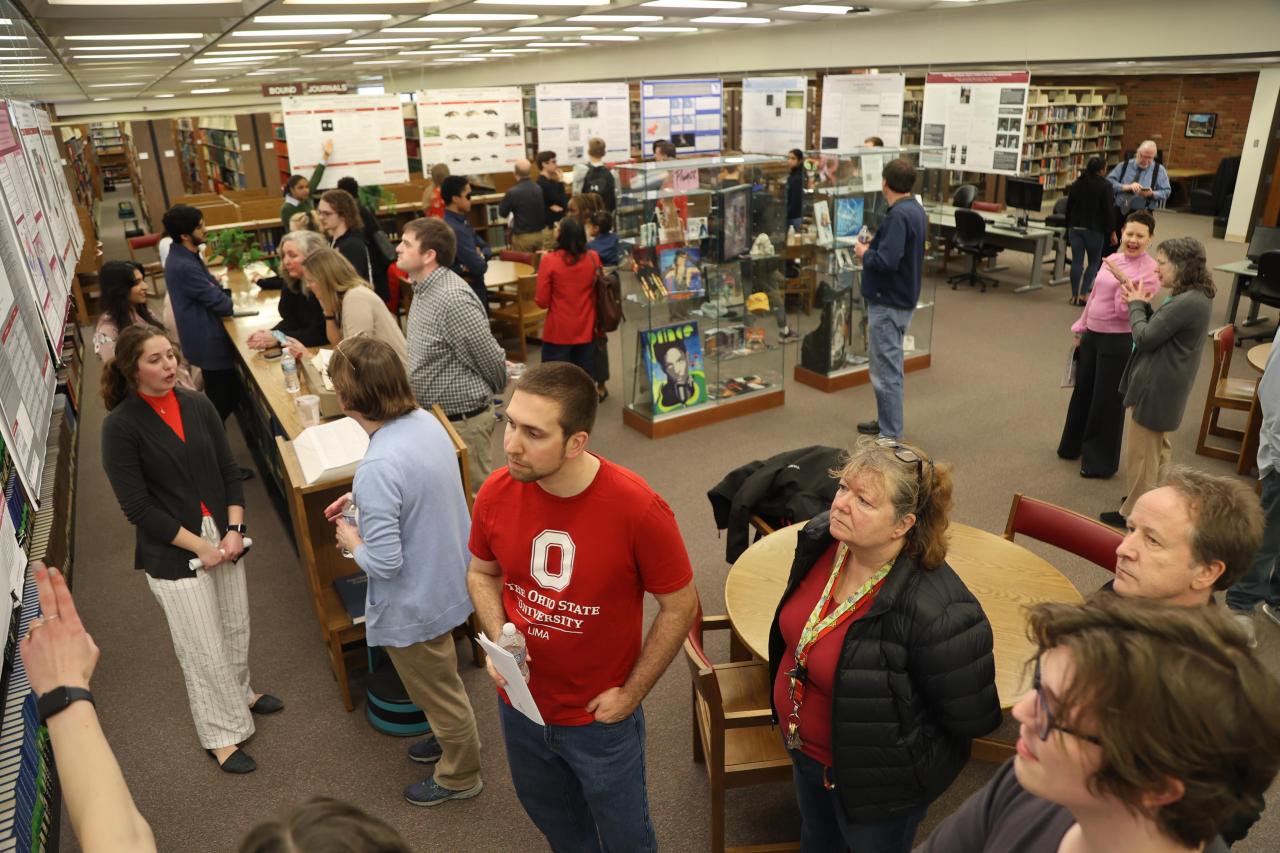Much like other human endeavors, research is usually built on something else. Usually. Undergraduate researcher and biology major Carter Welch finds himself in that rare position of being at the beginning.
Welch is doing the baseline look at water quality in the Lost Creek as it meanders its way through the Ohio State Lima campus. He and his research mentor Dr. Zac Beres, visiting assistant professor of biology, have been classifying the organisms present and studying how they interact with each other and their environment from both a natural site and a bridge site.
“There is more to a water system than we think -- from the different organisms, big to small, that live there and the suitability of the water for us humans to drink. There are many organisms in the creek system that call it their home and many actions that humans take determine how the creatures live in the water,” Welch said. “It is up to us to be able to understand our impact on the different watersheds and organisms that live in them.”
Just in the few years Welch and Beres have been sampling, the inputs have changed. Regenerative practices in the campus fields surrounding the creek are taking hold. A water retention pond installed as part of a United States Environmental Protection Agency grant will allow the farmer to positively change how much and when runoff from the agriculture fields enter the creek and the larger water system.
“Through our monitoring efforts and large-scale efforts on campus we are working to ensure that we are not contributing to the eutrophication and thus algae blooms experienced in Lake Erie,” Beres said. “The management decisions that we make related to the natural areas of our campus may potentially have a substantial impact on various ecosystem services such as recreation and fishing in the greatest of the Great Lakes. Understanding the interconnectedness of our various ecosystems is vitally important to our understanding and survival in the face of rapidly changing climates.”
While he is the first undergraduate researcher in the creek, Welch knows he will not be the last to suit up in waders and pull out the test kits. The topic is too important to quality of life in the Lake Erie Basin.
“This long-term monitoring is vital to understand the creek and can help to assist the management of our ecosystem that we live in,” Welch said. “For the future, the quantity of the organisms will be studied to be further understood and hopefully allow other students to resume this research topic. This research helps us to understand the world we live in and provide a piece to a larger puzzle of the world’s ecosystem.”








